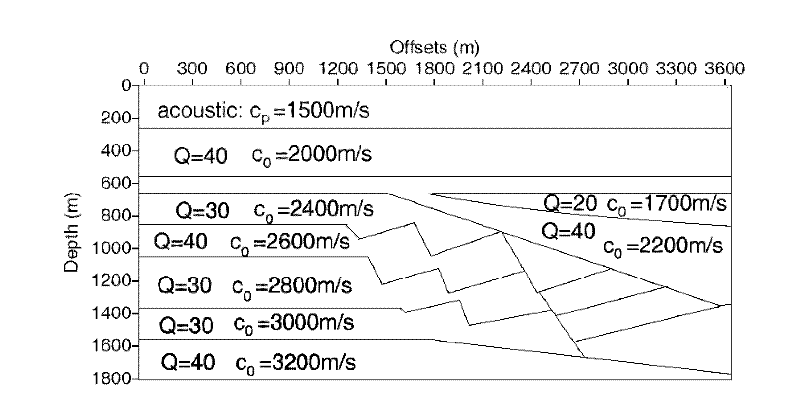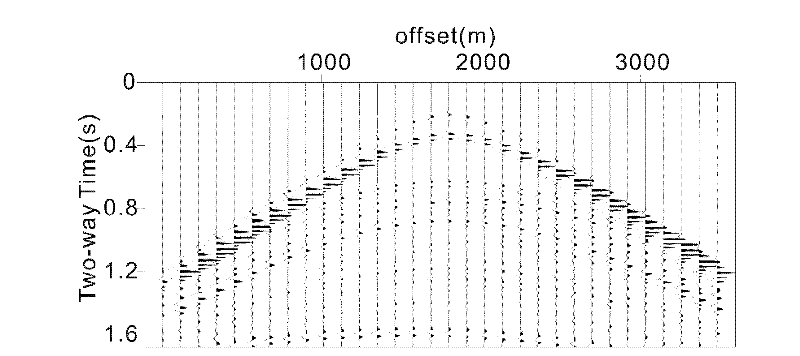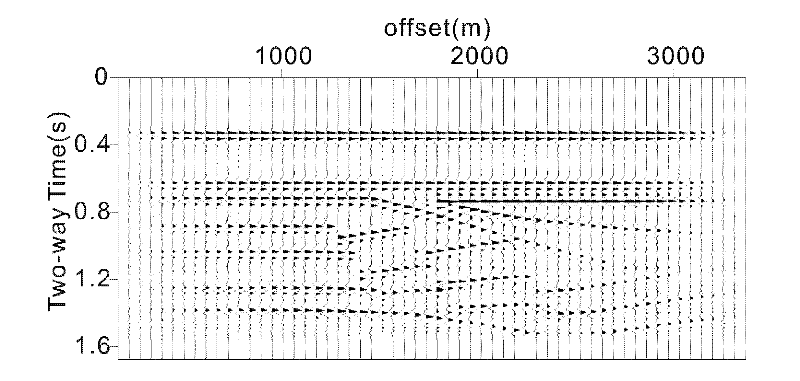Method for determining stratum stack quality factor by direct scanning of prestack time migration
A pre-stack time migration and quality factor technology, applied in seismic signal processing and other directions, can solve the problems of data being easily affected by noise, distortion, amplitude attenuation, etc., achieve fast viscosity compensation, improve calculation efficiency, and reduce impact Effect
- Summary
- Abstract
- Description
- Claims
- Application Information
AI Technical Summary
Problems solved by technology
Method used
Image
Examples
Embodiment Construction
[0076] Method for determining stratigraphic stack quality factor by direct scanning of pre-stack time migration, aiming at figure 1 For complex geological structures, a numerical method is used to synthesize the middle shot with 51 shots, and the seismic records collected on both sides are received. Taking the simulated data of the pre-stack theoretical model as an example, the validity, accuracy and practicability of the method are illustrated. The specific steps are as follows:
[0077] 1) Using the two-dimensional frequency domain finite difference method, the two-way acoustic wave equation is used according to figure 1 The macro-medium model shown is a set of pre-stack seismic data with viscous absorption characteristics forward modeled according to the actual seismic bilateral acquisition method. The obtained gun records are as follows figure 2 shown.
[0078] 2) Read the pre-stack seismic data, extract a piece of near-offset data and a piece of long-offset data from...
PUM
 Login to View More
Login to View More Abstract
Description
Claims
Application Information
 Login to View More
Login to View More - R&D
- Intellectual Property
- Life Sciences
- Materials
- Tech Scout
- Unparalleled Data Quality
- Higher Quality Content
- 60% Fewer Hallucinations
Browse by: Latest US Patents, China's latest patents, Technical Efficacy Thesaurus, Application Domain, Technology Topic, Popular Technical Reports.
© 2025 PatSnap. All rights reserved.Legal|Privacy policy|Modern Slavery Act Transparency Statement|Sitemap|About US| Contact US: help@patsnap.com



